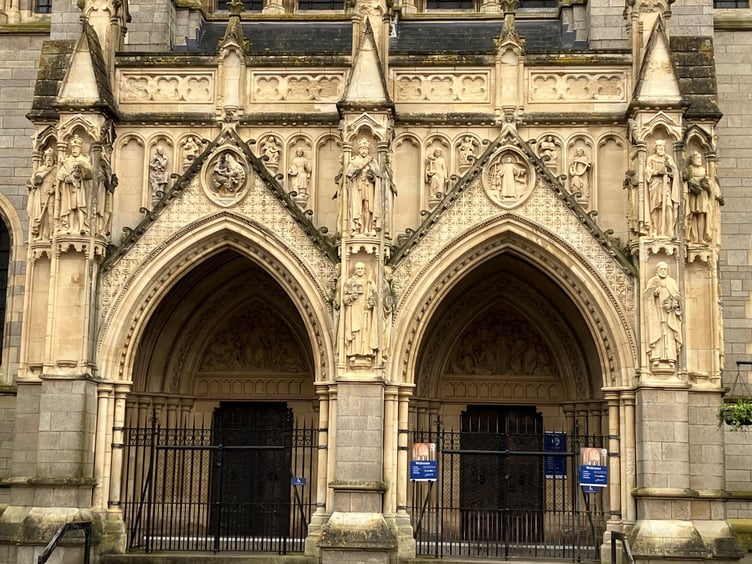SOME things really are written in stone! Imagine having the job of deciding how to decorate an extraordinary public building with something that will last for centuries.
This was the weighty responsibility faced by the builders of Truro Cathedral – the first all-new Anglican cathedral in the country in over 650 years. As it neared completion in 1902, the project reached the point of planning the ceremonial entrance – the great West Front at High Cross. The Edwardians had to decide: what did they want the building to say?
As well as featuring the great and the good, the cathedral team decided to install female statues in niches on the West Front. These represented ‘Moralities’ - core values they wanted the cathedral to stand for, then and into the future.
On the left-hand side, they chose ‘personal’ morals to guide our daily lives: sobriety, chastity, knowledge and wisdom. On the right, they placed ‘social’ morals that would help us care for other people: mercy, faith, truthfulness and patience.
Our ancestors may not always have lived up to their public values behind closed doors, but the West Front shows that they thought hard about how they could and should do better.
The cathedral-builders lived in a world without contraception, antibiotics, health and safety or state benefits. Unwanted pregnancy, disease, domestic violence and workplace injuries had catastrophic consequences.
So promoting moral values such as chastity before marriage, and sobriety at home and in the workplace, made practical as well as ethical sense.
The statues representing social morals, meanwhile, speak of an ambition for a kinder world, shaped by faith, truthfulness, mercy and patience towards others.
Two additional Edwardian ‘moralities’ are represented by images of two turning points of Cornish religious history, set in circles above each West Front doorway.
‘Humility’ shows Kenstec, Bishop of Cornwall, accepting the authority of the English Church in the ninth century. ‘Harmony’ shows the first Bishop of Truro (Benson) at the laying of the cathedral’s foundation stone in 1880.
It would not have been lost on local people that the first scene shows Kenstec (a Cornish Bishop who bowed to the Archbishop of Canterbury), whereas the second shows Benson (the first Bishop installed in Cornwall since 1050 AD) who became the Archbishop of Canterbury. How’s that for a turnaround?
If you would like to know more about the history of Cornwall’s cathedral, volunteers lead guided tours from Mondays to Thursdays at 11am, starting from the Welcome Desk. There is no need to book and no charge (although many people make a donation to help look after the building). To express an interest in becoming a volunteer guide, please email [email protected]


.jpg?width=209&height=140&crop=209:145,smart&quality=75)

Comments
This article has no comments yet. Be the first to leave a comment.